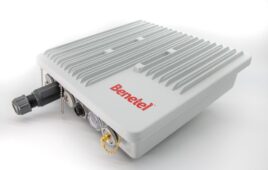The user interface (UI) is one of the most important pieces of software real estate on your mobile phone. UIs serve as a “canvas” to brand, personalize or engage each individual user. However, one of the more vital components of a UI might raise your eyebrow, simply because you haven’t given it much thought – the fonts. The humble typeface is often forgotten as a critical communication tool.
 Before the introduction of feature-rich smartphones, mobile developers relied on bitmap fonts in a couple of sizes for UI design and application development. But today’s mobile phones offer much more sophisticated features in many models, as well as large displays and high-resolution screens. With phones expected to perform like PCs in many cases, it’s more important that text displays clearly and consistently. Multiple font styles and rich, typographic capabilities allow developers to design UIs and applications that are easy to read, fun to look at, simple to navigate and true to a brand’s expected appearance.
Before the introduction of feature-rich smartphones, mobile developers relied on bitmap fonts in a couple of sizes for UI design and application development. But today’s mobile phones offer much more sophisticated features in many models, as well as large displays and high-resolution screens. With phones expected to perform like PCs in many cases, it’s more important that text displays clearly and consistently. Multiple font styles and rich, typographic capabilities allow developers to design UIs and applications that are easy to read, fun to look at, simple to navigate and true to a brand’s expected appearance.
Scalable fonts and font technologies make it possible for OEMs, mobile developers and designers to impart typographic continuity across a variety of screen resolutions, device designs and applications, regardless of the languages required. Because of their scalable nature, scalable fonts and font technologies are smarter to implement than fixed-in-size bitmap fonts in order to support text across a wide spectrum of mobile phones, from the low end to the high end.
Consider three important tips:
Tip #1) Choose scalable fonts and font technologies over bitmap fonts to help reduce time to market
Scalable fonts can be rendered at desired sizes, regardless of screen size or resolution. Whether sourced from an existing mobile typeface library or custom designed, scalable fonts engineered for memory-constrained devices enable the display of high-quality text. Unlike fixed-in-size bitmap fonts, which require a separate font for every text size supported by the phone, you need only one scalable font per typeface design to do the same. This allows you to better scale your production requirements when implementing fonts, and therefore reduce time to market. Scalable fonts also provide typographic flexibility. For example, in addition  to having the freedom to implement multiple sizes of text used in your UI, you can integrate special effects, such as embossed, engraved, shadowed, or even glowing text. You can also control how much of an outline you might want to give text in order to ensure that it stands out from busy backgrounds, such as maps.
to having the freedom to implement multiple sizes of text used in your UI, you can integrate special effects, such as embossed, engraved, shadowed, or even glowing text. You can also control how much of an outline you might want to give text in order to ensure that it stands out from busy backgrounds, such as maps.
Figure 1: Scalable fonts enable a consistent, typographic look-and-feel. You can develop and design your offering with type that complements your brand’s appearance in other media, from the Web to print. Image used with permission from NINJA Mobile, a developer and publisher of mobile applications.
Tip #2) Choose the right fonts to help your UI or application stand out from the crowd
Typography can be a powerful differentiator – imagine if every brand or logo were presented in the same font. Fonts can also play a major role in brand trust; it’s easy to be suspicious of a communication from a familiar brand if the fonts aren’t what you expected.
Fonts for mobile phones are available to meet specific purposes, whether a custom-designed typeface is right for you, or if a pre-existing, mobile-optimized font would work best. OEM-ready fonts can also be selected to complement the look and feel of an existing brand.
Figure 2:
Five fonts from the Univers family are part of the “Bell User Experience.” Monotype Imaging collaborated with global strategic-creative consultancy, frog design, which worked with Bell Mobility to create an embedded, customized mobile user interface in Canada. The fonts complement Bell Mobility’s corporate brand fonts. Users have access to a broad range of characters to support Latin-based languages. Images courtesy of frog design.

Tip #3) Include support for multiple languages to reach additional global opportunities
Consumers around the world deserve a memorable user experience. Scalable, multilingual fonts present unique challenges to the mobile environment, as small screens often hinder the ability to fully display characters or even to read them. Chinese fonts, for example, may include intricately shaped characters that are inherently challenging to read when displayed at small sizes. However, technology is available today to maintain high text display quality for East Asian characters when displayed at any size. Additionally, stylistic East Asian fonts are now available. Until recently, style was typically sacrificed to meet memory requirements. With up to 28,000 characters in a Chinese font, typographically pleasing designs had been off limits for low-memory devices because they required more memory than could be allocated practically.
 Figure 3: Typographic style no longer needs to be sacrificed when displaying East Asian text in memory-constrained devices. Characters on the left have been rendered using a standard TrueType font, and the characters on the right have been rendered using Monotype Imaging’s Edge Technology, which has been engineered for typographic clarity.
Figure 3: Typographic style no longer needs to be sacrificed when displaying East Asian text in memory-constrained devices. Characters on the left have been rendered using a standard TrueType font, and the characters on the right have been rendered using Monotype Imaging’s Edge Technology, which has been engineered for typographic clarity.
A scalable font engine should also support a layout engine in order to ensure scalable, high-quality multilingual text display to fulfill local, regional or international requirements. Layout engines provide the technology to support features such as bidirectional text flow, or contextual character substitution capabilities for writing systems such as Indic, Hebrew and Arabic. While Latin-based languages such as English use characters that don’t change shape, other written languages include characters that may appear differently depending on usage. For example, the shape of an Arabic character may change depending on the next character the user has typed.
Thanks to scalable fonts and font technologies, it’s possible to bring typographically rich products to mobile markets worldwide. Users benefit with high-quality text that’s easy to read, fun to look at, simple to use, distinctive in style and true to the brand.
Steve Martin is vice president of engineering for Monotype Imaging.




